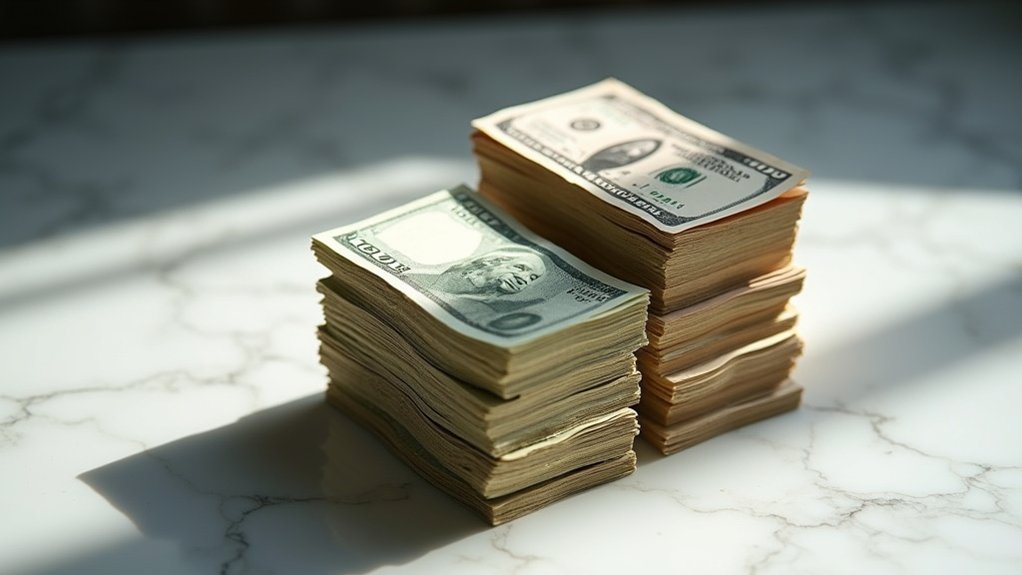Safe-haven currencies are where panicked money runs when markets collapse. They hold or gain value while everything else burns. The US Dollar, Swiss Franc, and Japanese Yen dominate this space—backed by political stability, deep liquid markets, and credibility that survives chaos. During the 2008 meltdown, the USD strengthened despite the crisis starting in America. The Yen surged over 7% around Brexit. For African traders watching pairs like USD/ZAR, these currencies dictate whether local markets get crushed or merely bruised when global fear strikes.

When markets panic, money doesn't vanish—it runs. And it usually runs to the same few places every single time. Safe-haven currencies are the financial world's emergency exits—currencies that hold or even gain value when everything else is falling apart. For African traders watching USD/ZAR spike or NGN weaken against the dollar during global chaos, understanding these currencies isn't academic. It's survival.
Safe-haven currencies are emergency exits where panicked money runs when markets collapse—understanding them means survival, not theory.
Safe havens work because of a few reliable traits: political stability, deep liquid markets, strong diversified economies, and low inflation. The US Dollar, Swiss Franc, and Japanese Yen dominate this club. They're boring. Predictable. That's exactly why everyone wants them when things gets scary. The USD is the heavyweight champion—most traded, most held in reserves, backbone of global trade. The Swiss Franc plays the neutral referee, backed by Switzerland's legendary fiscal discipline. The Japanese Yen survives on liquidity and Japan's massive current account surplus, even with debt levels that would sink most nations.
History proves the pattern. When Lehman Brothers collapsed in 2008, the USD strengthened despite the crisis starting in America. After 9/11, the Swiss Franc jumped 3% in two hours. Brexit sent the Yen up over 7% against the dollar almost instantly. Crises trigger reflexive flight to these currencies. Nigerian traders holding USD positions during oil price crashes know this drill. South African traders watch the Rand bleed against safe havens whenever political uncertainty flares or commodity prices tank. The South African Rand tends to weaken sharply during risk-off episodes due to its status as an emerging market currency with high correlation to commodity prices and global risk appetite.
The distinction between safe-haven and reserve currencies matters, though most overlap. Reserve status means central banks hoard your currency for prestige and liquidity. Safe-haven status means traders trust you when the world burns. The USD is unique—it's both, despite running persistent deficits and sometimes higher interest rates than its peers. That shouldn't work, but American financial markets are so deep and dominant that it does. Safe-haven currencies often carry a negative risk premium, underperforming risk-free rates during calm periods because investors pay for the insurance they provide during turmoil. Major central banks use monetary policy tools to influence their currencies' attractiveness, adjusting rates and liquidity to either support or temper demand during volatile periods.
For African traders, safe-haven currencies form the other half of nearly every major pair: USD/ZAR, USD/EGP, EUR/USD where dollars still anchor risk-off behavior. When global risk appetite collapses—whether from pandemic, war, or financial contagion—African currencies typically weaken against these havens. Capital flows out, exchange rates deteriorate, volatility explodes. Kenyan, Ghanaian, and Zambian traders don't just read about safe havens in textbooks. They watch local currencies get hammered against them in real time, especially when foreign investors dump emerging market assets wholesale. Central banks often intervene in currency markets during these moments, attempting to stabilize exchange rates and prevent excessive depreciation. Interest rate decisions by major central banks directly impact safe-haven currency values, as higher rates can attract capital flows even during periods of market stress. Multinational corporations operating across borders use these currencies to manage currency exposure and protect against exchange rate volatility in their international operations. Understanding safe-haven dynamics isn't about chasing exotic strategies. It's about knowing where the tsunami of capital will flow when fear takes over. These currencies also influence global trade by making exports from safe-haven countries more expensive when their values surge during crises.
Common Questions
Can African Traders Access Safe-Haven Currencies Through Local Brokers?
Yes, African traders can access safe-haven currencies like USD, CHF, and JPY through local brokers—no mystery there. Most platforms list these as “majors” with decent liquidity and tighter spreads than exotic pairs.
Whether you're in Kenya, South Africa, or Nigeria, brokers regulated by local authorities (CMA, FSCA) typically offer USD/JPY, USD/CHF, and similar pairs. MetaTrader 4/5 and mobile apps make execution straightforward.
Minimum deposits vary, but entry-level accounts usually cover it. Safe-haven trading isn't some exclusive club.
How Do Safe-Haven Currencies Perform Against the Naira or Cedi?
During global crises, safe-haven currencies crush the Naira and Cedi—every single time. When investors panic, they dump African currencies and rush into USD, CHF, and JPY. Nigeria's oil dependence and Ghana's commodity reliance make it worse.
The 2020 pandemic? Naira tanked against the dollar. Ghana's 2022 debt crisis? Cedi collapsed. Central bank interventions barely slow the bleeding. It's structural—low reserves, high inflation, thin forex markets. Safe havens appreciate while Naira and Cedi get pummeled.
Are There Withdrawal Limits When Trading Safe-Haven Pairs in Africa?
Yes. African traders face withdrawal caps from multiple directions.
Nigeria's central bank has imposed monthly FX withdrawal limits as low as $1,000–$2,000 during reserve crunches.
South Africa restricts annual outflows to ZAR 1 million under discretionary allowance.
Brokers add their own daily or weekly caps—card withdrawals often max at $2,000–$3,000.
Local banks demand documentation, trigger AML reviews above certain thresholds, and limit USD ATM withdrawals to $500–$2,000 daily.
Safe-haven trading doesn't exempt anyone from these headaches.
Do African Regulators Restrict Trading Certain Safe-Haven Currency Pairs?
Yes, they do. Nigeria's CBN has banned offshore Forex trading entirely, which obviously includes safe-haven pairs.
Zimbabwe restricts forex dealings through licensed dealers only.
Egypt tightly controls USD trading through its banking system.
South Africa's FSCA allows it but monitors offshore brokers closely.
Kenya permits trading through CMA-licensed entities.
Each country picks its battles—some block everything, others just make it bureaucratic hell.
Capital controls in places like Angola and Ethiopia further complicate access to CHF, JPY, and USD pairs.
Which Payment Methods Work for Funding Safe-Haven Trades From Africa?
Bank wires still dominate, though they're slow and pricey—$10 to $50 per transfer, one to five days waiting.
Cards work fast but some African banks block forex payments outright.
E-wallets like Skrill and Neteller process in minutes with lower fees.
Mobile money—M-Pesa, MTN, Airtel—is catching on where brokers support it.
Crypto deposits bypass banking restrictions entirely, clearing in under an hour.
Method availability depends heavily on which country the trader calls home.










